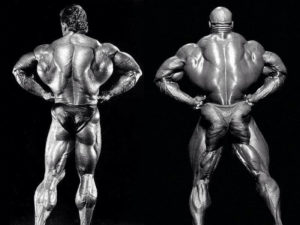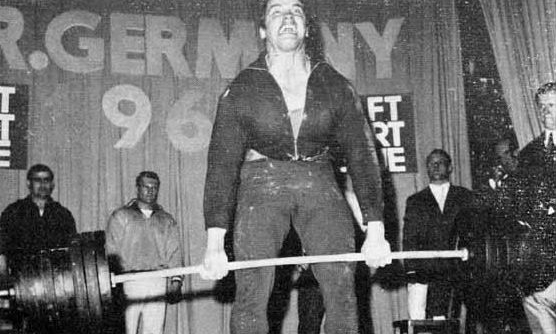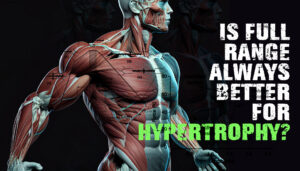Exercise selection is one of the most important variables when it comes to effective program design. Not all exercises are created equal and no two individuals will respond the same to a given exercise due to individual biomechanics. However, there are some exercises that most people will respond quite favourably to and then there are those that are very commonly overused or over prioritised when there are better alternatives.
In this article, I want to share with you the top 5 exercises which I feel are most overrated and give you some better alternatives.
1. Barbell Bench Press
The barbell bench press is perhaps the most popular exercise of all time. The classic variation of this exercises is performed with hands just outside of shoulder width and elbows at 45 degrees to the body as the bar is lowered to the sternum just below the nipples.
While this variation of the bench press is most ergonomic as tension is evenly distributed between the pectorals, delts, and triceps, it is not ideal for maximally stimulating the pec fibres especially the upper portion.
Early on in my training when I used to do a lot of bench presses my pec development was lagging. I had overly developed lower pecs but my upper pecs were nearly non-existent. This created a look more resemblant of breast than pecs.
I have also seen many other guys who were shoulder dominant get no stimulation at all from the classic bench press because their delts were taking over.
What I have found to be far superior for developing the pecs is taking a wide grip and flaring the elbows right out to the side while stopping the bar an inch or so short of touching the chest on the way down and stopping at three quarters range at the top.
This variation takes the delts and triceps out of the movement as isolates the pec fibres a lot better especially the upper portion. Keep in mind that if you have an impinged shoulder this variation may aggravate it in which case I recommend performing bench presses with dumbbells.
2. Chins Ups
Many regard chins as the king of back exercises. I strongly disagree. While I am not in any way suggesting chins are not a great exercise, in my opinion they are far inferior to many of the rowing variations.
For me when it comes to building a large, thick, wide, and detailed back rowing is where it’s at. My back is probably one of my strongest body parts. Every show I have competed in I blew the other competitors out of the water with the size, symmetry, and thickness of my upper back.
I built my back with a lot of heavy rowing. Most free weight rowing exercise are real power movements that allow you to hoist a lot of weight. I have done barbell rows with 140kg for up to 10 reps, 7 plate T-Bar Rows for over 10 reps, and I have gone as heavy as 90kg on one arm dumbbell rows for 8 reps.
Those numbers are far and beyond what I can do in any chin up variation. Since hypertrophy is largely proportional to the tension on the muscle, and tension is proportional to the load, it stands to reason that exercises which allow you to hoist the most amount of weight will have a superior muscle building effect.
This is further evidenced by EMG studies that show higher muscle activation in rowing exercises verses chin ups and the fact that bodybuilders who have historically sported the freakiest back development like Ronnie Coleman and Dorian Yates were renowned for lifting extreme poundages in their rowing movements. Chins up were only performed as a supplementary exercise at the beginning or end of their routine with a much lesser load.

The biggest and freakiest backs in the world were built from hoisting massive poundages on rowing movements.
Chins up were only performend as supplementary exercise.
3. Deadlifts
The Deadlift is a full body compound movement that recruits multiple muscle groups such as the hamstrings, glutes, quads, lower back, upper back, upper traps, and forearms. As such it is widely regarded by many as the king of mass building exercises.
While I do like some of the deadlift variations I rarely ever perform the traditional deadlift. Firstly, because it is very taxing on the nervous system more so than any other exercise in existence. Even the best deadlifters in the world only perform the deadlift once every 7-10 days
Secondly, because the stress is distributed over so many muscle groups I have never found it to be a great mass builder for any one area specifically. For example, for, building the hamstrings I find the Romanian deadlift is far superior to traditional deadlifts because it places them in a far greater stretch. For the upper back I like snatch grip deadlifts from pins above the knee because the upper back is most active in the top range of motion in a deadlift. Using a snatch grip further increase upper back activation.
For the quads I much prefer squatting or leg press variations. For the lower back good mornings are far better because you create a much longer lever in the torso. And for the glutes, hip thrusts, horizontal back extensions or reverse hypers are the best because the glutes are most active in the end range of hip extension.
4. Upright Rows
Most people consider the upright row an upper trap exercise and typically it is performed with a narrow grip to chin. The problem with performing the exercise in such manner is that it places excessive stress on the wrists and it also can lead to shoulder impingement syndrome.
The variation of this exercise which I prefer is to take a wide grip and only lift the bar to the lower sternum. Not only does this take stress of the shoulders and wrists but it also targets the medial delts and traps far more effectively.
EMG studies show that the narrow grip upright row targets more biceps and front delts, and less medial delts and traps. To me the wide grip upright row to the sternum is the squat of medial delt exercises. It is a compound movement in which you can hoist a lot of weight compared to any lateral raise variation. This exercise can also be performed with dumbbells gives you even more freedom and further reduces the stress on the wrists.
5. Crunches
Next to bench presses and curls, crunches are perhaps the next most popular exercise in the gym. Everyone want to train their beach muscles and the abdominals stand atop of that list.
However, if we take a close look at the structure and function of the abdominal muscles you can see why crunches are a relatively ineffective exercise. The lumbar spine is designed for stability. As such the muscles surrounding the lumbar spine such as the rectus abdominals, obliques, and erector spinae are designed to provide stability and support to this area.
What this means is that their primary role is to contract isometrically and act as a stabilizer rather than as a dynamic mover. EMG studies actually show greater recruitment of the abdominals from heavy compound movements such as Squats and deadlifts where these muscle are being recruited to resist spinal flexion verses crunches.
If someone has very weak abdominals I typically start them out with plank and leg raise variations to build up the isometric strength in their abdominals before progressing them into squats and other heavy compound movements. Occasionally when I add in some crunch variations for variety I prefer to use a swiss ball or a rope so I can place the abs in a stretched position.






